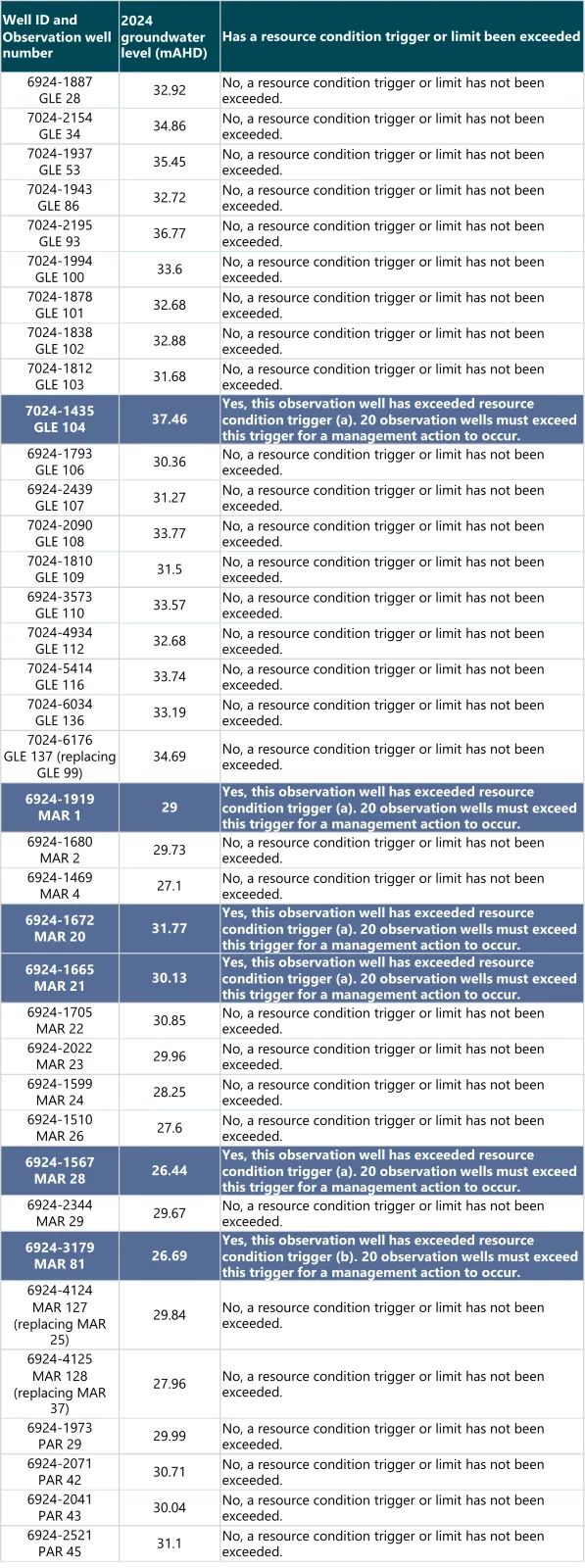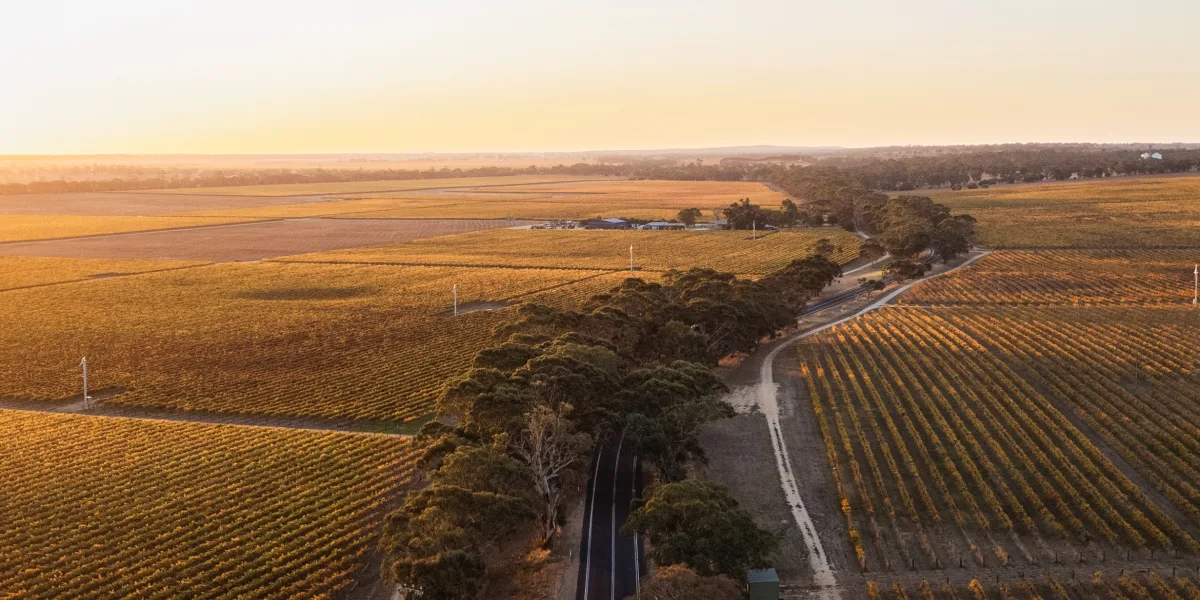Adaptive management in the Padthaway Water Allocation Plan
Under the Padthaway Water Allocation Plan 2025, resource condition is assessed annually against the adaptive management framework to allow for transparent management responses if the resource condition declines to an undesirable state.
The adaptive management framework implements the use of resource condition triggers, a resource condition limit and a resource management threshold that correlate to specific groundwater levels that will be used to trigger transparent management responses.
Adaptive management framework
Resource condition triggers are set at levels above the resource condition limit as early warning indicators to the community and water resource managers of a decline in the resource condition. This signals to the community that they should self-regulate their water use to prevent further decline in the resource. It also triggers management responses such as an investigation of spatial extent and causes of decline and suspension of carry-over.
The resource condition limit is a threshold that indicates an unacceptable risk to the resource and stakeholders and it triggers the management response of a restriction of allocation to the determined acceptable level of extraction (ALE) of 48,000 ML/y across all licensees.
If groundwater levels recover above the resource condition triggers or the resource condition limit meeting the conditions in the plan, the imposed management actions are removed for the following water use year.
The resource management threshold has been set at a level that indicates that the groundwater resource is at significant risk that is not recoverable with the provisions in the current water allocation plan and prompts the LC Landscape Board to begin an early review and amendment of the plan.
A minimum of 20 observation wells listed in the table below must record a spring groundwater level below resource condition trigger (a) or resource condition trigger (b) to trigger the corresponding management actions.
A minimum of 10 observation wells listed in the table below must record a spring groundwater level below resource condition limit (c) for three consecutive years to trigger the corresponding management action.
If all observation wells listed in the table below record a spring groundwater level below resource management threshold (e) for three consecutive years, the corresponding management action is triggered.
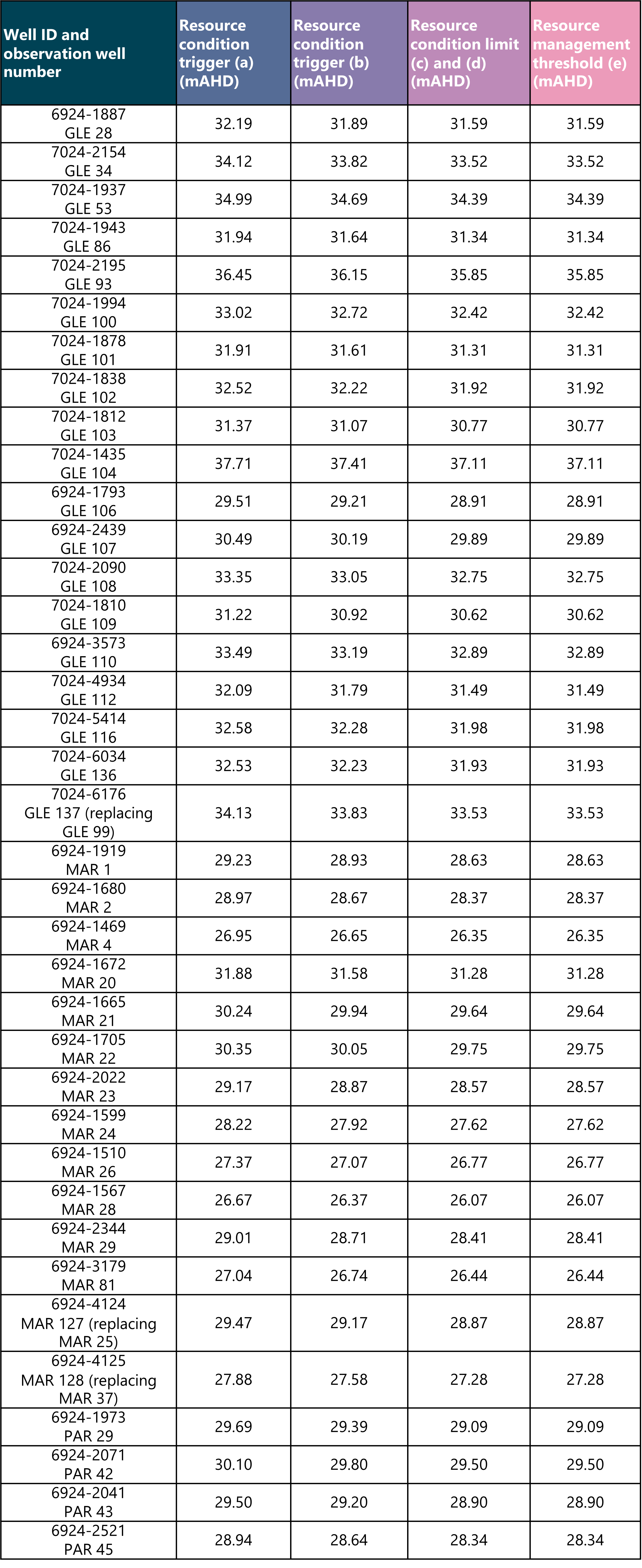
Resource condition update for the Padthaway Prescribed Wells Area
The first assessment of resource condition against the resource condition triggers and limit is due in January 2026. Water licence holders will receive direct correspondence about the resource condition when this status report is available.
In the lead up to the first assessment of resource condition against the adaptive management framework the following update is provided. This pre-dates the 2025 adoption and implementation of the Padthaway Water Allocation Plan. It is provided for information purposes only; it cannot be used to trigger a management action under the Padthaway Water Allocation Plan.
Spring 2024 groundwater levels against the resource condition triggers, limit and management threshold
In 2024 the conditions associated with the resource condition triggers, limit or resource management threshold were not met.
Six observation wells exceeded resource condition trigger (a). No observation wells exceeded any other trigger, limit or resource management threshold. A minimum of 20 observation wells listed in the adaptive management framework must record a spring groundwater level below resource condition trigger (a) to require licensees be notified of the trigger being exceeded.
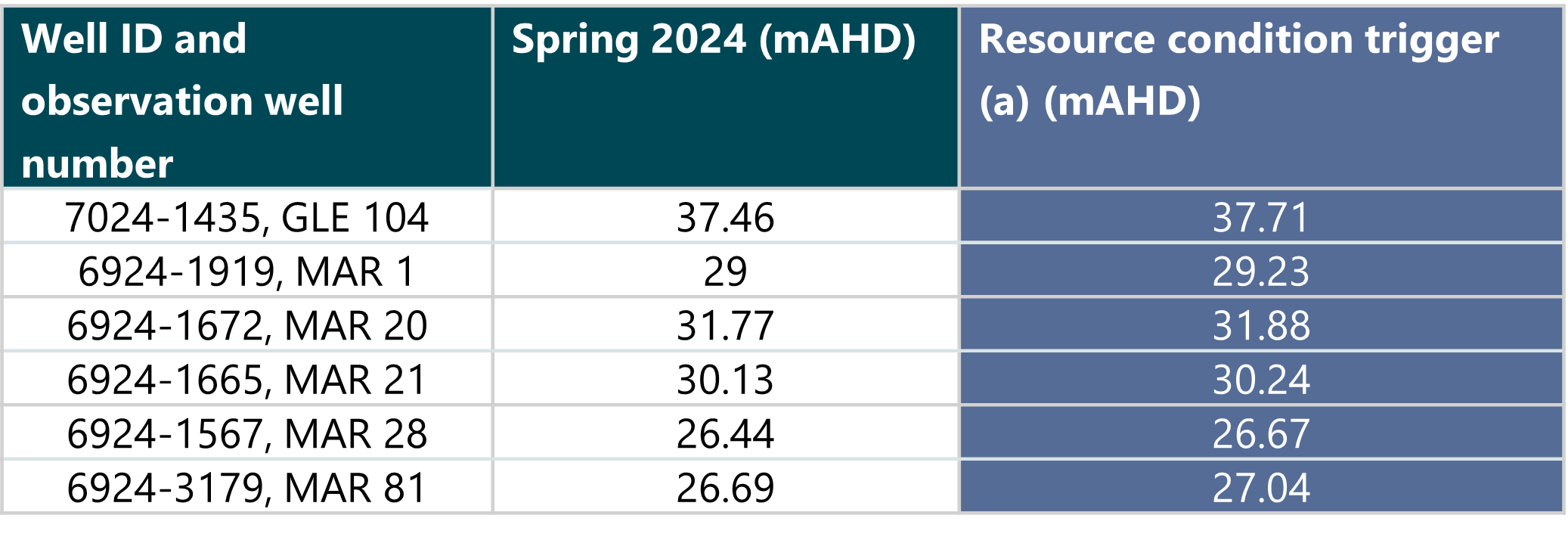
Map of observation wells exceeding a trigger at Spring 2024
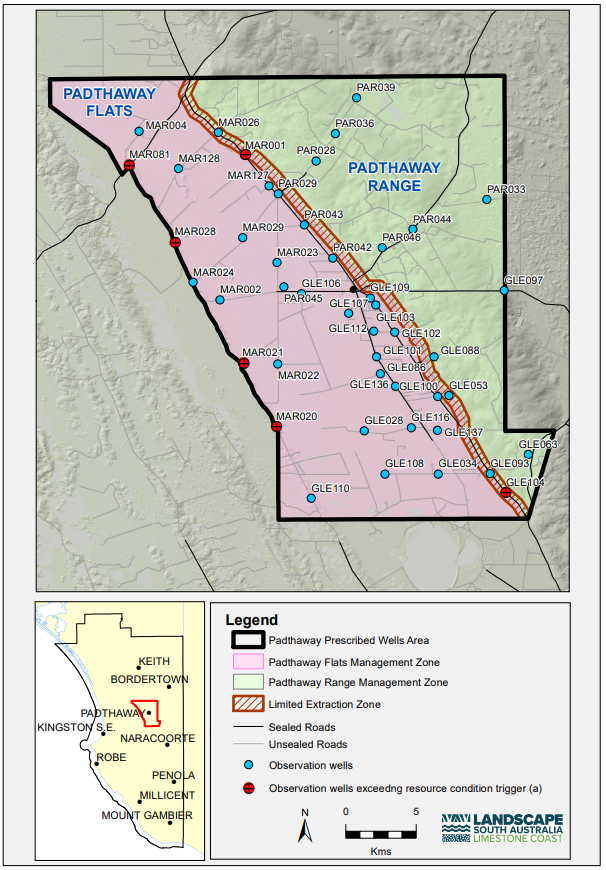
Groundwater levels for each observation well in the adaptive management framework
Spring 2024
